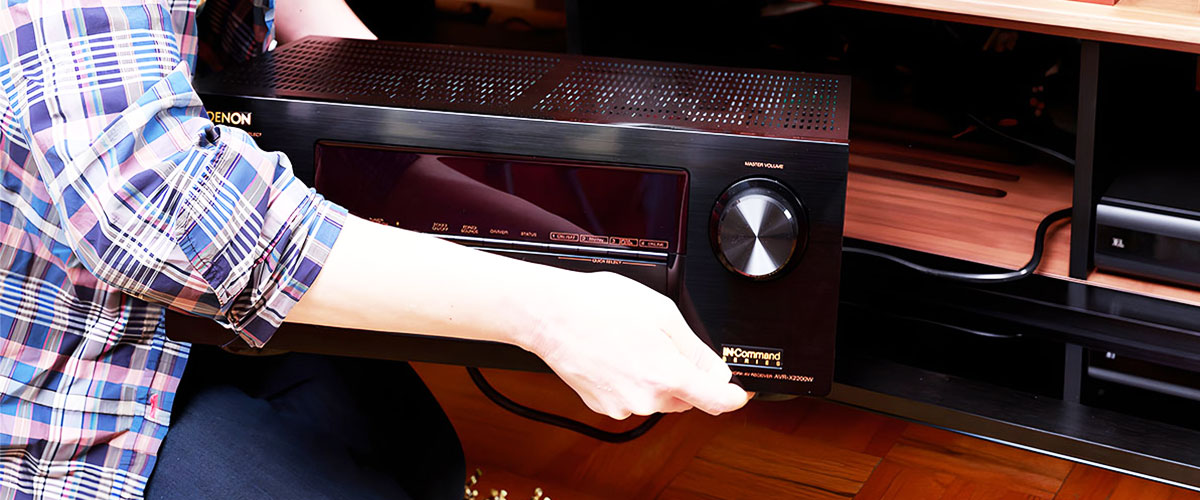Today, Netflix is familiar to millions of people around the world. Many movie buffs are excited about their movies and shows. And I completely share this sentiment with them. Indeed, Netflix has great movies in absolutely different genres: thrillers, sci-fi, comedies, etc. And as you know, new movies usually have a lot of mind-blowing special effects. Therefore, to maximize the enjoyment of the spectacle, the sound and picture should be at the highest level.
Avid movie buffs have long ago introduced AV receivers into their multimedia home systems. This allows you to get Netflix to play through surround sound (depending on the model of the device) and significantly affects the quality of the picture (we should not forget about TV). With a sufficiently advanced receiver, you can create a Netflix home theater at home. Does it sound cool? But it works even better! You will experience incredible emotions together with the heroes of “Love, Death and Robots” or be scared again and again by special effects in the series “Very Strange Things”.
Connect your AV receiver to the TV

As you probably know, modern TVs are already smart and multifunctional devices. It is no longer just a “box with pictures and sound”. Modern models have many additional features, including the built-in Netflix application. So you do not need an AV receiver with Netflix (which, by the way, does not exist). It is enough to connect your TV to the receiver via HDMI ARC/eARC input. That’s actually all the “hard work”. Your personal Netflix movie theater is created!
Next, trust the “smart devices” (your AVR), which will recognize what signal it receives, and if the series or movie is available in surround sound, the receiver will understand and play it. By the way, surround sound on Netflix is not uncommon; therefore, you will be spending not just hours but days and months watching different content.
Netflix sound quality is always top-notch, so I advise you to ensure that the other components of your home theater are up to par. You should have a good TV with 4K (or better, 8K) support and at least a 7-channel receiver.
Troubleshooting and tips

No audio from surround sound system
So, let’s start with the most common problem. If the movie is in Netflix 5.1 audio format and you don’t hear the sound from the surround sound system, then follow these 3 simple steps:
- Check your receiver’s input. Make sure your AVR is set to the correct input source to match. your streaming device or TV.
- Receiver volume. It is often the case that you simply forgot to turn up your receiver’s volume to an audible level. So check it and increase it if necessary.
- Streaming device settings. Ensure that your streaming device (most often your TV) has its audio output set to send audio over an HDMI connection to your AV receiver.
Audio/Video sync issues
If you notice a delay between sound and video when using a surround sound system with Netflix, try the following solutions:
- First, check your AV receiver’s settings for audio delay or synchronization. If possible, adjust these settings to synchronize the audio with the video.
- If the problem persists, I recommend “digging” into your TV settings. Some TV models also have audio delay settings.
Experiment with these settings and see if that improves synchronization. Don’t forget to use your user’s manual. You can usually find useful information there (if you are not lazy).
Sound drops out or hiccups
It happens that when you watch a movie, the sound occasionally disappears, or there are strange glitches. To try to solve these problems, I recommend the following steps:
- The first thing to do is to check that the cables are correctly and securely connected. In addition, I recommend replacing your HDMI cables (if the cables are unreliable) with higher-quality ones.
- You should also ensure that there are no problems with the connection or the cable itself that goes from the receiver to the speakers.
Streaming quality
Well, the last issue that I’m going to list today also pesters users sometimes. If you experience low-quality streaming on Netflix affecting both audio and video, try the following steps:
- Check that your internet connection is stable and has enough bandwidth to stream high-quality content. It seems like a simple solution, but many overlook it and look for more complex causes.
- Adjust the streaming quality settings in the Netflix app on your streaming device (most likely your TV), specifying a higher resolution and bit rate if your connection supports it.























